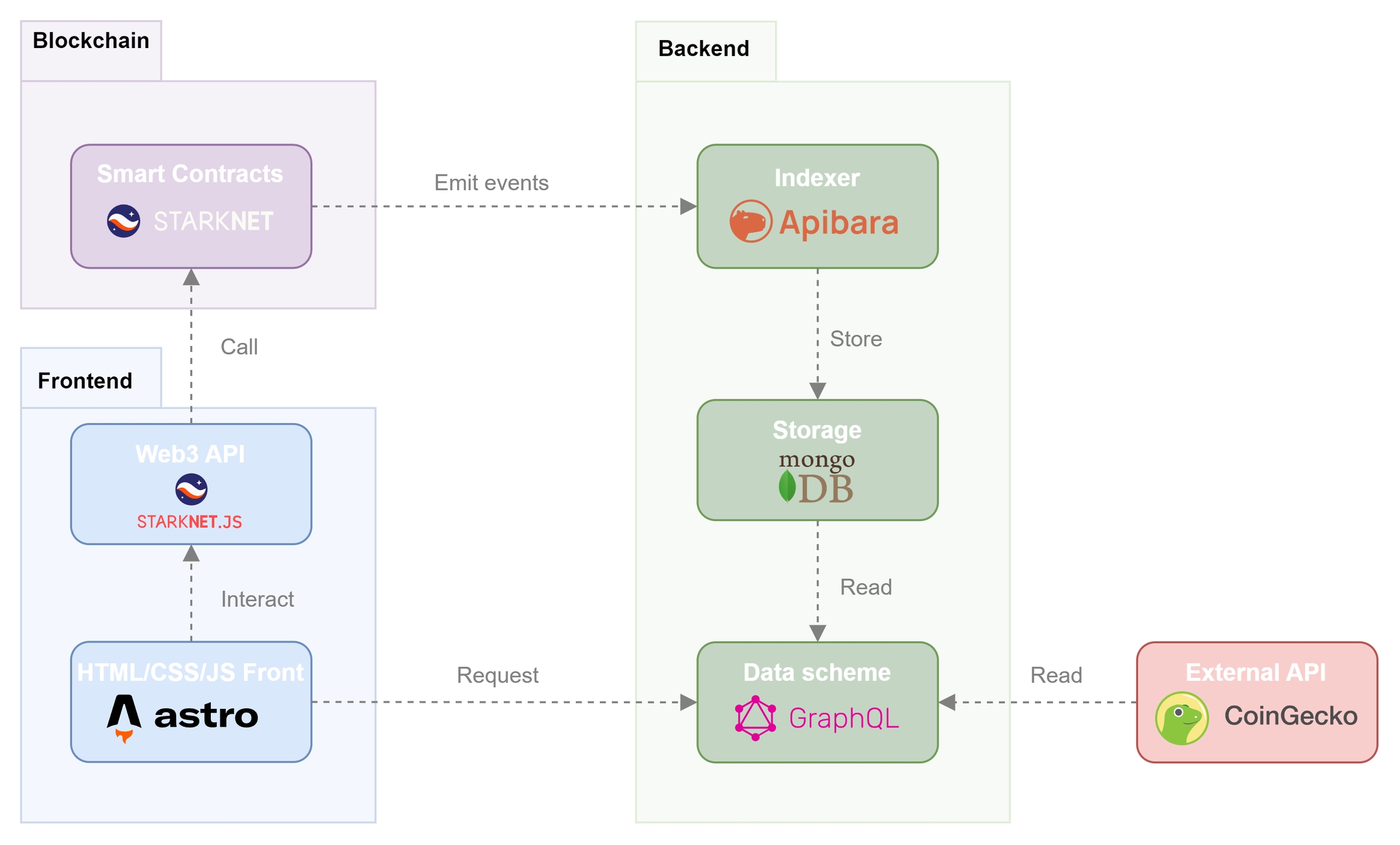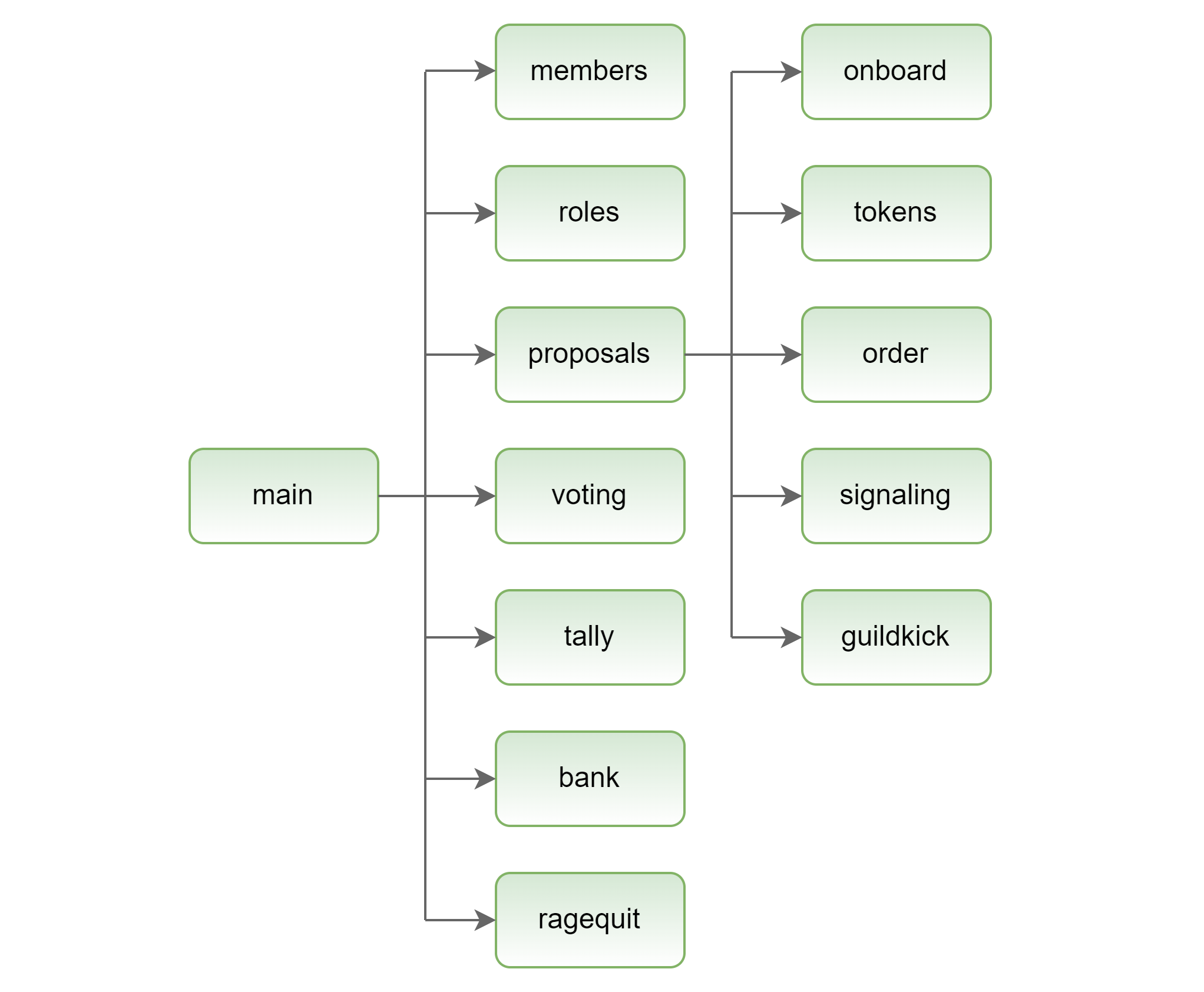🔎Overview
Technical components
Workflow
1/ Smart contracts
Like Moloch V2, the DAO is deployed as a single contract. Although not strictly necessary, it can deployed as an upgradeable contract through a proxy.
The DAO's contract follows a modular design that allows to (i) incorporate only the modules that are needed (ii) extend existing functionalities with new modules (implementing a minimal interface). This departure from Moloch V2 gives the DAO extra flexibility allowing to personalise its functionalities while keeping a simple maintainable design.
Unlike Moloch V2, every type of proposal has its own module separatedly implementing submiting and processing logic. One of the reasons to do so is to make their lifecycle more configurable, especially regarding role-based autorisation on a per type basis. For example in Alpha version, only Admins are allowed to onboard a new member, as other members are not legally accountable for that action.
2/ Backend
Indexing is managed through Apibara which is a framework and protocol to build composable streams of Web3 data.
The contracts emit several events that are read and transformed by the Apibara Indexer, stored into mongoDB and queryable through GraphQL.
3/ Frontend
The Frontend is built with Astro, a UI agnostic framework to build content-focused websites.
The template used is Accessible Astro Dashboard.
The GraphQL data are requested using Fetch API and mapped in a JSON structure.
The Frontend interact with StarknetJS through Get Starknet, which allow dApps to seamlessly connect to any wallet on StarkNet.
Last updated

